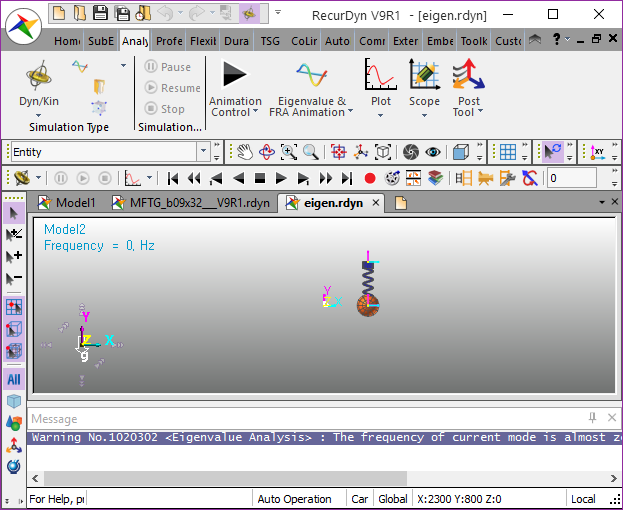
If the user simulates the dynamic analysis including the eigenvalue analysis, A *.FRQ file is created. It contains an undamped natural frequency or a damped natural frequency for all modes on the time step. The first column is the time step and other columns mean the undamped or damped natural frequency as shown in Figure 1.

Figure 1 FRQ file
To confirm the result of Eigenvalue analysis using another mathematical software, please use the A matrix of the state matrix (the state space representation). The A matrix composed M, C and K as follows.
 (32)
(32)
Generalized Eigenvalue form can be written as Eq. (33) using the A matrix.
 (33)
(33)
Where,  and
and  are Eigenvector and
Eigenvalue, respectively.
are Eigenvector and
Eigenvalue, respectively.
•Number of reported modes is between DOF and 2*DOF. If the number of all reported modes are greater than DOF of a system. The system is one of three possible cases.
•The first is over damped system. Eigenvalue of an over damped case has two different real number in same mode shape.
•The second is that numerical error exists. Eigenvalue has two difference complexes in same mode shape.
•The other case is that real and imaginary values are all zero.
•If the undamped or damped natural frequency is almost zero. These modes are the rigid mode. In this case, RecurDyn shows a warning message on the Output Window as Figure 2.

Figure 2 Warning message
*The warning message is shown when the undamped or damped natural frequency is almost zero.